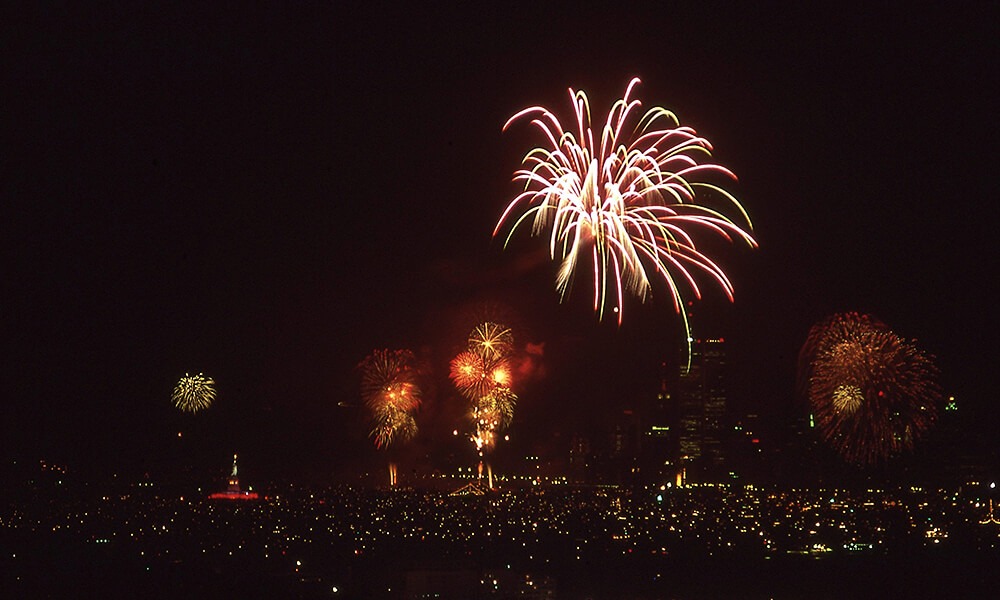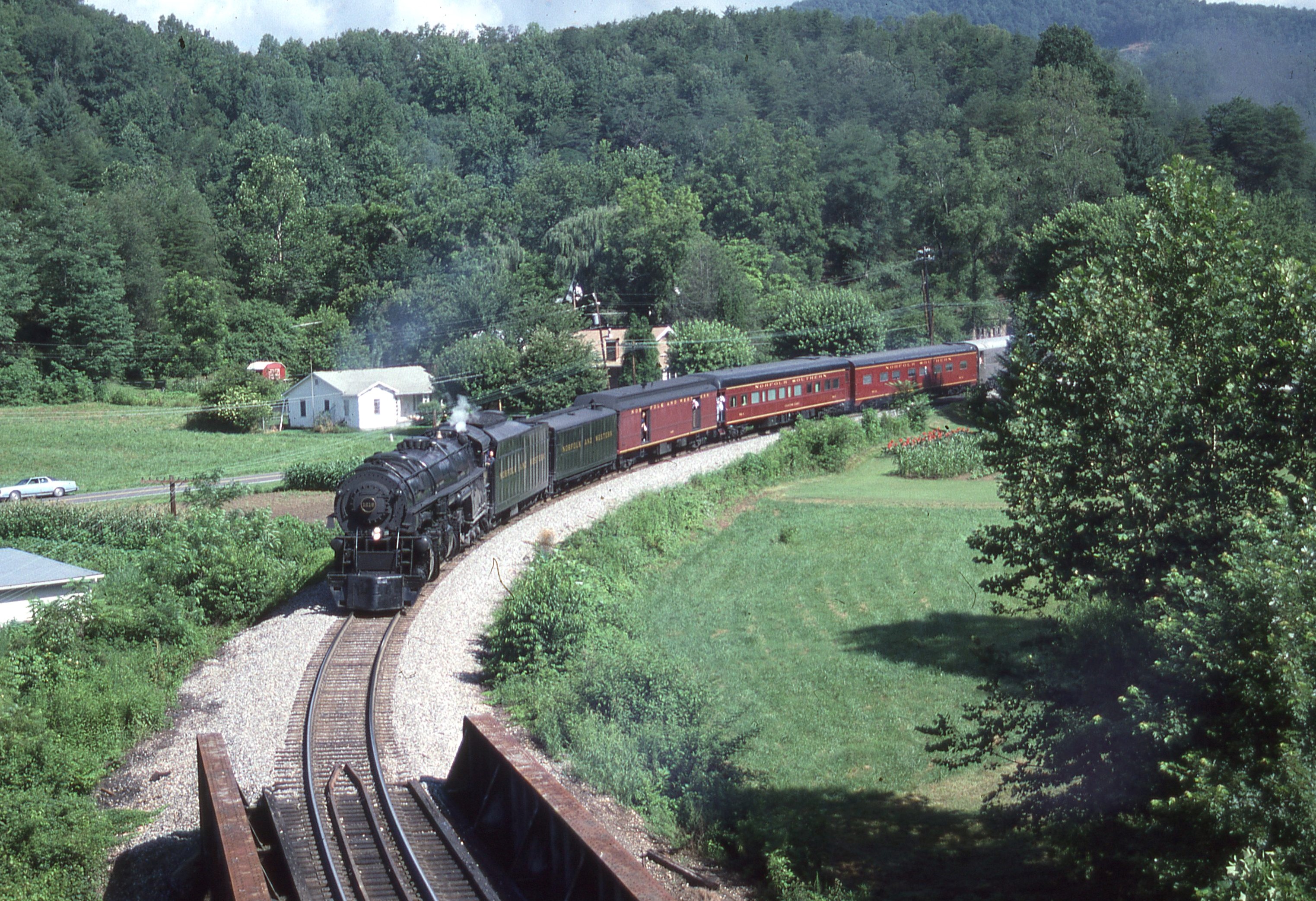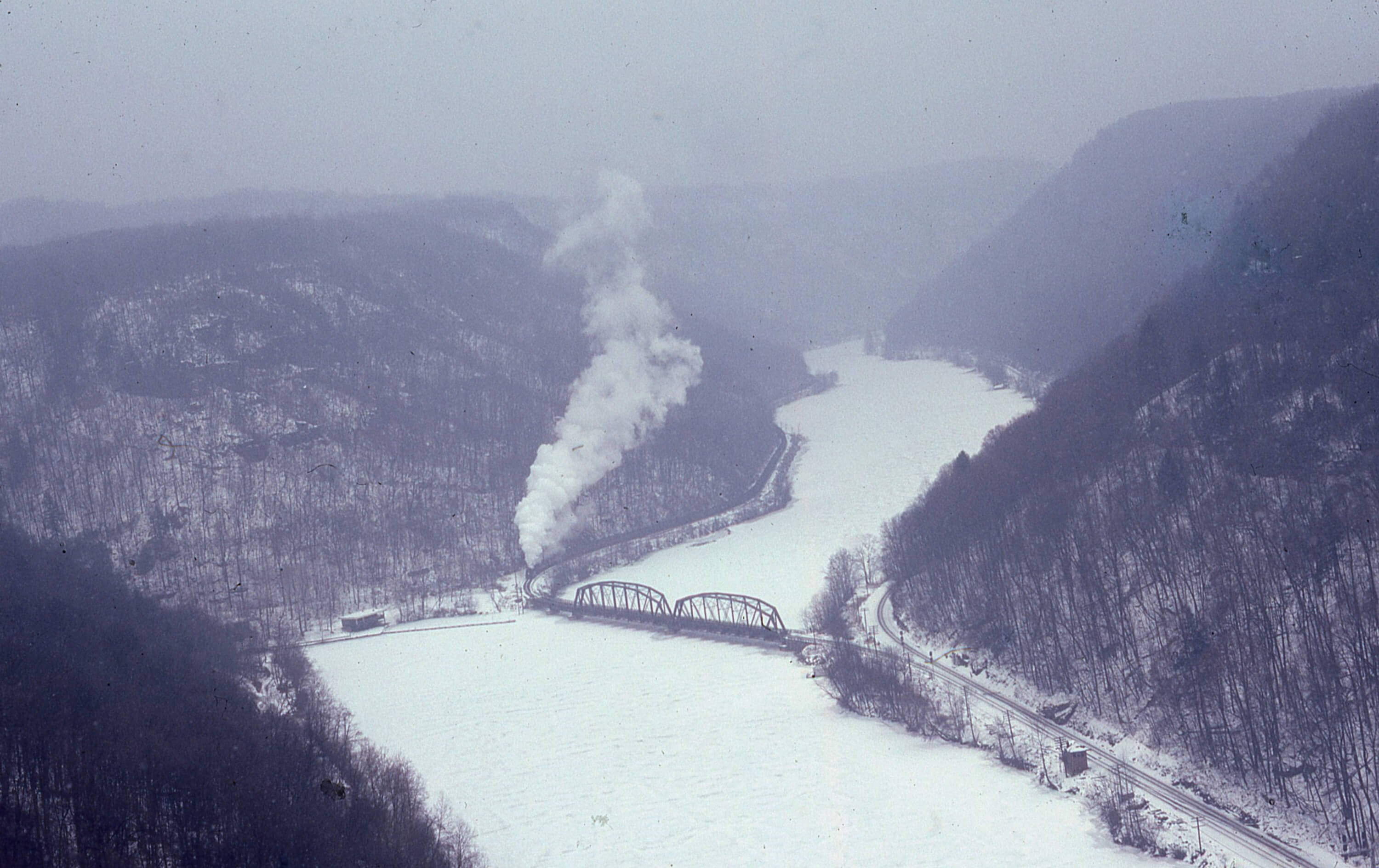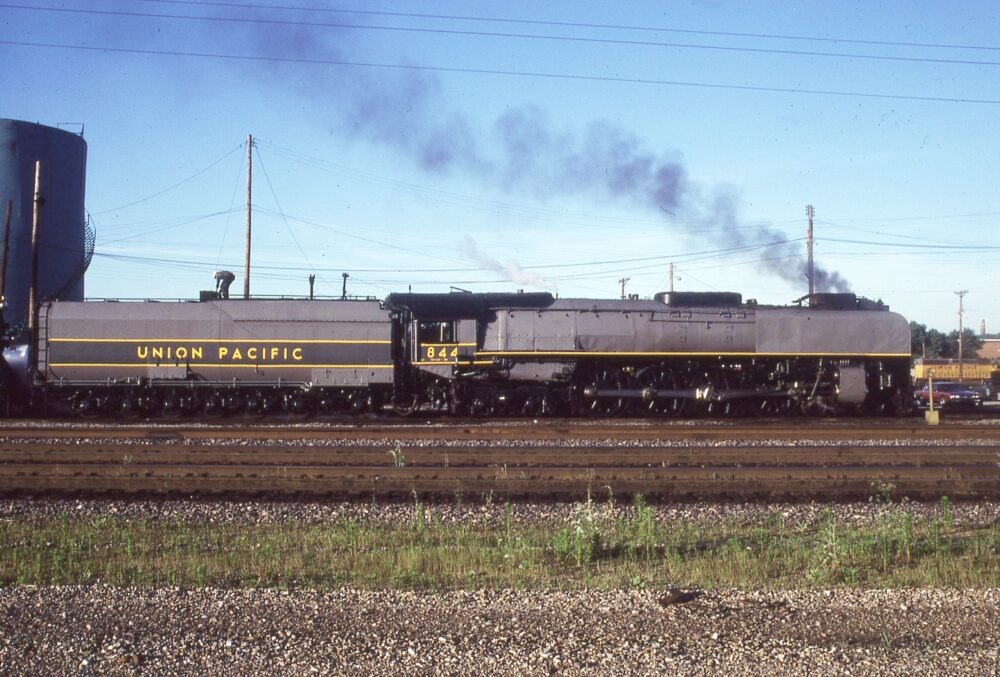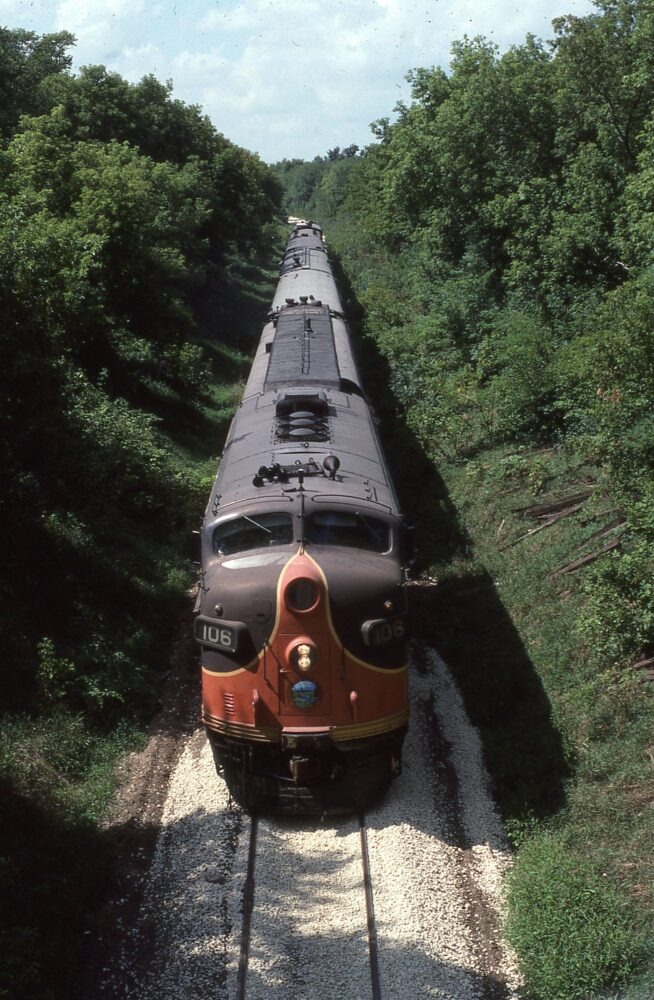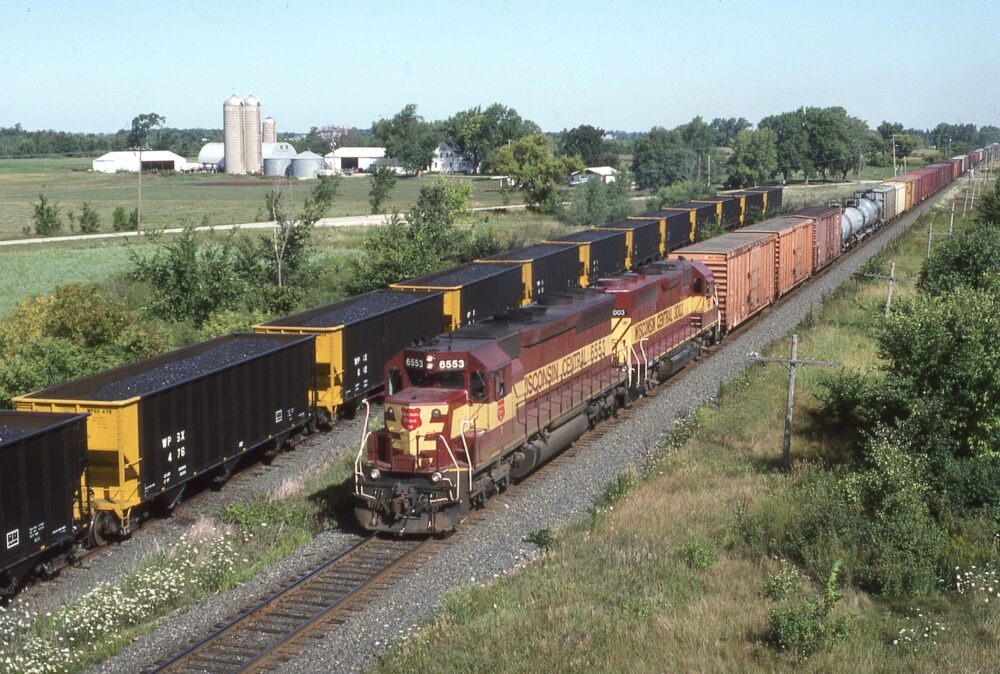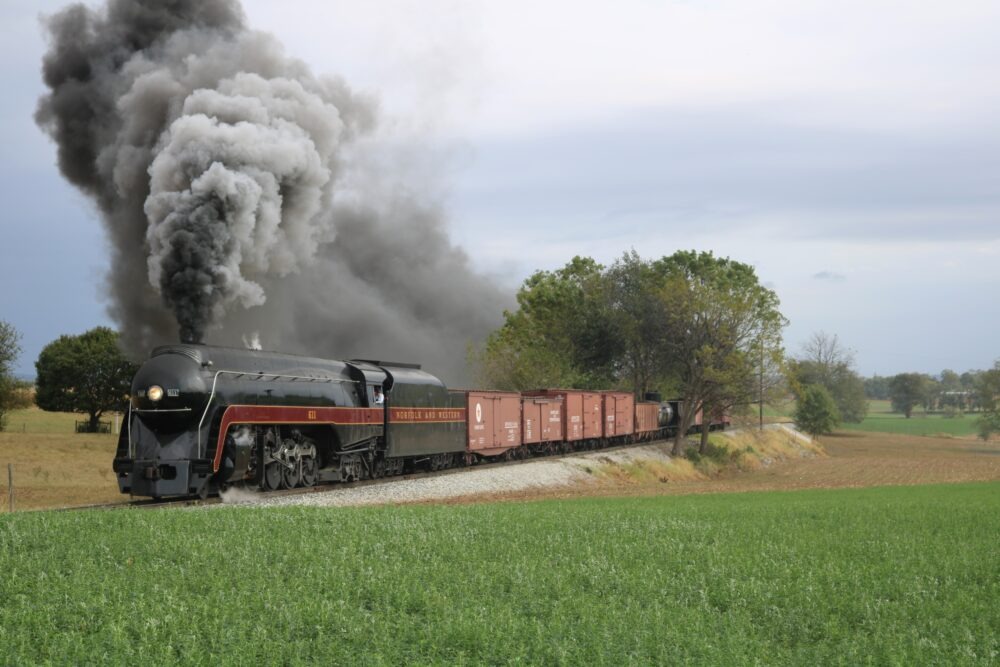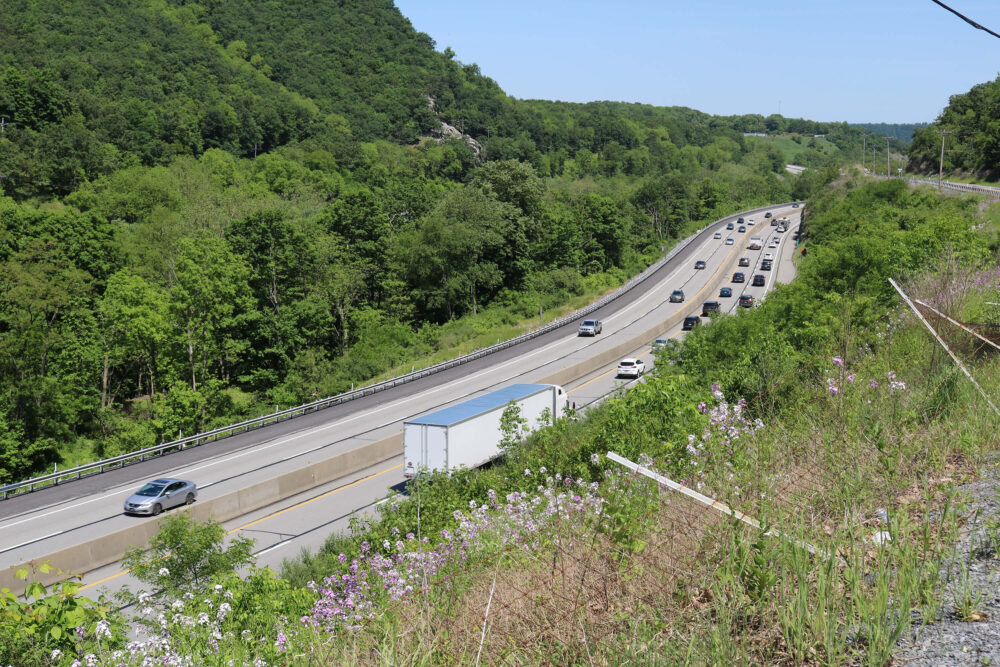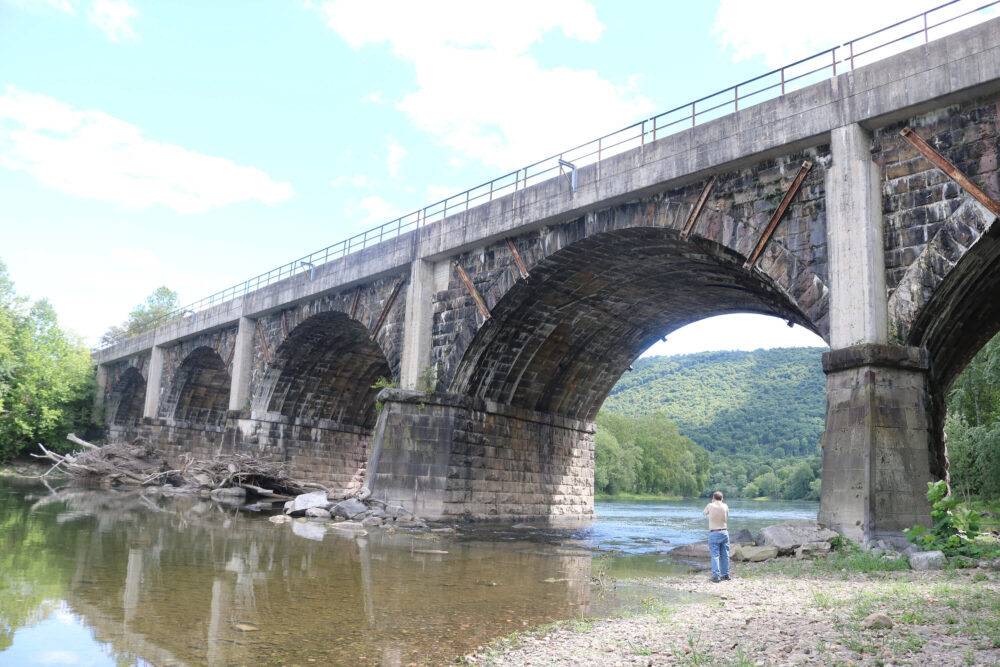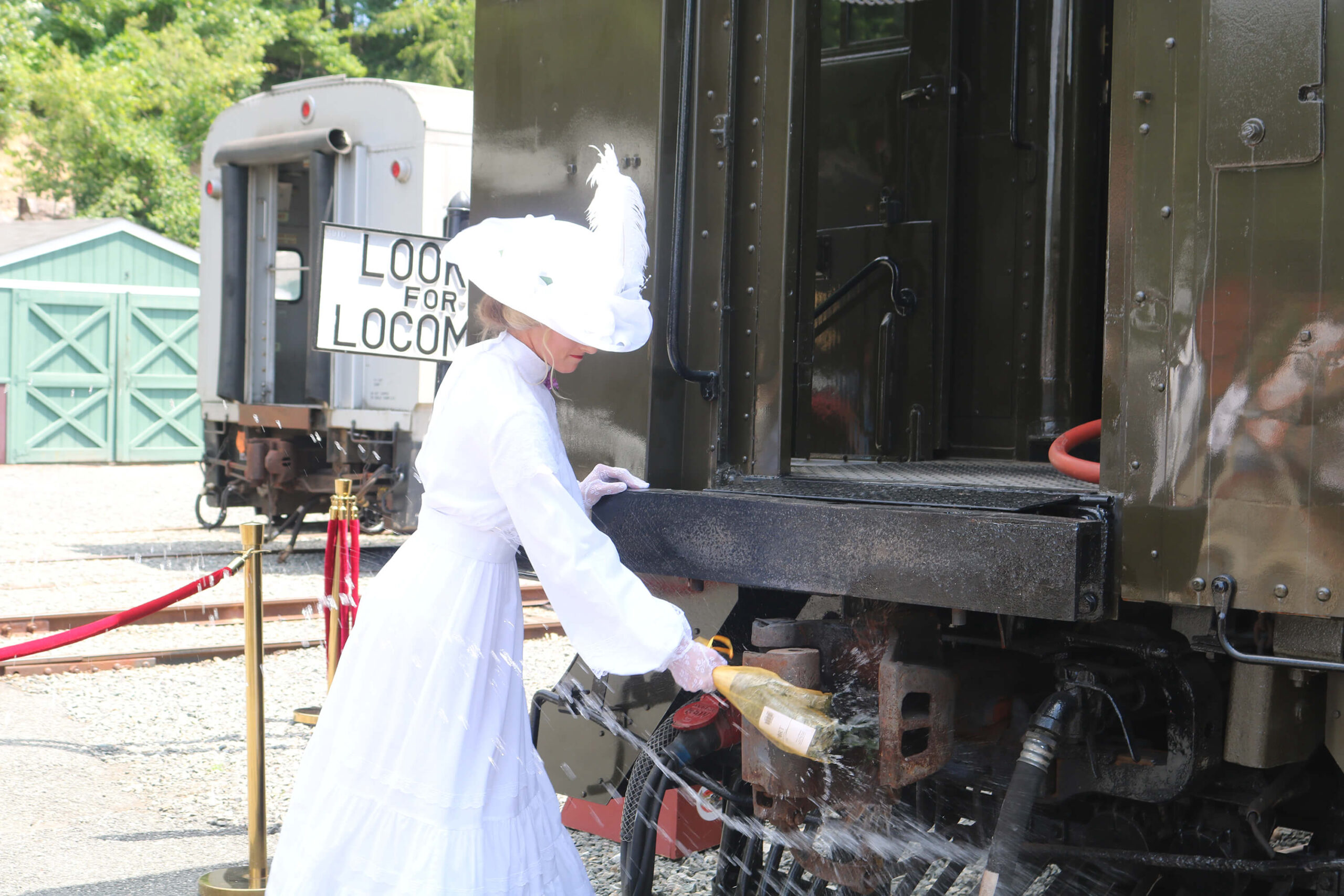What better way to introduce a series of railroad photos than to get your attention with this marvelous picture of the fireworks over New York Harbor as they appeared on July 4, 1986. This was a very special year, as the Statute of Liberty had just been rehabilitated, complete with a new torch. This picture was taken from the top of Grymes Hill on Staten Island. At that time, the photographer worked as a Media Librarian at Wagner College and was permitted to take these pictures from the top of one of the college’s dorm buildings, affording this fantastic view.
Before we go on, let me tell you that the photographer of this photo essay is my friend from the National Railway Historical Society, Mitch Dakelman. For the past several decades, Mitch has been its Visual Archive Librarian, taking care of miles of the rail-related film — both professionally produced or shot by railfans — along with tens of thousands of slides … all donated to the Society for historic preservation.
Most of the commentary which follows is Mitch’s personal description of what you see in each picture, including the date when the photo was taken. Take it away, Mitch…
This Norfolk and Western RR Class A 2-6-6-4 (denoting the number of wheels in each section) locomotive is a 4-cylinder, articulated steam locomotive built at the N&W Roanoke Shops in 1943. Used in WWII passenger and freight service, it was retired in 1959. It had been preserved and was eventually restored by Norfolk Southern in 1987. Used in excursion service until 1991, it is now on static display at the Roanoke, Virginia, Transportation Museum. On July 23, 1989, it was the featured locomotive appearing at the 1989 National Railway Historical Society’s annual convention. Here, at Old Fort, North Carolina, the locomotive and train begins its climb up to Asheville.
Well into the 1980s, the Baltimore and Ohio/Chessie System still had manned control towers. Like the majority across the land, this tower no longer exists — having been replaced by electrical circuits and devices controlled, in most cases, from central control points, which may be hundreds of miles away. Here, at Hyndman, Pennsylvania, at 9:45 AM on Monday, December 30, 1984, tower man Jay has a few moments to review a railroad book. Hyndman, or known as “Q Tower,” was all Armstrong lever controlled. The operator allowed me to throw a switch, which required using your entire body weight to push the lever attached to rods, which leads to the individual track switch that’s to be changed.
Ex-Chesapeake and Ohio, 4-8-4, T1 class Greenbriar #614, passes through the New River Gorge in West Virginia, headed westbound pulling a load of empty coal hoppers, at 9:30 AM on Tuesday, January 29, 1985. The locomotive had been wired to record data for the development of a new design of coal-fired steam locomotive, named ACE-3000, due to high oil prices at the time. Spearheaded by Ross Roland, his idea was compelling. In January 1985, the locomotive hauled coal trains between Huntington and Hinton, West Virginia. Despite a good showing that the 614 delivered, no prototype of the ACE-3000 was ever built — not long after these trips were made, oil prices collapsed. Ross has said, “We have the technology and data should the project ever be resurrected.” With the recent emphasis on fossil fuels being environmentally unfriendly, most likely, the project will never come to reality. But, it was sure neat to see that engine work in the mountains of West Virginia!
Union Pacific Northern FEF-3 (four-eight-four) #844 was the last steam locomotive delivered by the leading locomotive builder of the era, Alco, in 1944. Running on premier passenger trains during WWII, it was downgraded to pull freight trains in the 1950s. Unique of all UP steam locomotives, she has never been deleted from the active roster of UP locomotives. Since then, she has toured the vast UP system, pulling excursions and goodwill trips. Here, during the early hours of June 18, 1990, during the NRHS 1990 convention, she rests in the former Missouri Pacific Railroad yards in St. Louis, Missouri. She is 114 feet 2 5/8 inches long from front coupler to rear of the tender, has 80-inch driving wheels, and weighs in at 454 tons.
The Wisconsin and Calumet was a short line operating in northern Illinois and southern Wisconsin over old Milwaukee Road routes between 1985 and 1997. During a railfan trip with Robert Jittler, who had just moved from New Jersey to Indiana, we headed out to do some photography north of Chicago. Passing through Zenda, Wisconsin, at 2:35 PM, August 17, 1991, we caught the afternoon tourist dinner train, powered by F7a diesel number 106. The W&C was nicknamed “Wicket,” according to Robert, as its reporting marks were “WICT.”
The Wisconsin Central (today part of the Canadian National rail system) operated over lines formerly owned by the original Wisconsin Central Railway, which eventually became routes within the SOO LINE and MILWAUKEE ROAD rail companies. After these two railroads folded, a new firm created this new Wisconsin Central. Unlike many railroads, W-C often allowed railfans to photograph their trains on their property by way of permits. Here, SD45’s 6553 plus one haul freight through Van Dyne, Wisconsin on August 19, 1992.
Norfolk and Western Class J #611, a 1950 product of the N&W Roanoke Shops, was loaned to the Strasburg Railroad in central Pennsylvania by the Virginia Museum of Transportation in 2019 and then again in 2021. During a photo shoot, the “J” is seen hauling freight through the Lancaster County countryside at a location called Carpenter’s Field at 10:30 AM, October 8, 2019.
Deviating from rail to road, the Pennsylvania Turnpike follows the uncompleted South Penn Railway route, partially excavated and built in 1883-1885. In 1938 the newly formed Pennsylvania Turnpike Commission purchased the right-of-way, using pieces of it for the new highway, which opened on October 1, 1940. In this photo taken on May 31st, 2021, the Turnpike winds through the mountains on this rugged Bedford Narrows stretch of highway. Seven tunnels were used on the Turnpike, six partially excavated decades earlier by the South Penn crews. The photographer has been interested in the Turnpike for many years and co-authored two books about it with Dr. Neal Schorr of Wexford, Pennsylvania.
The Pennsylvania Railroad’s Middle Division, between Harrisburg, Pennsylvania, and Altoona, Pennsylvania, is known for its many stone arch bridges. These bridges were constructed in the early 20th century to replace older iron bridges that did not have the strength or capacity to haul rail traffic at that time. The Mayes Bridge is one of them, crossing the Juniata River just west of Lewistown, Pennsylvania. The photographer’s good friend, Neal Schorr, examines the magnificent structure as it passes overhead in this July 2020 photo.
On June 20, 2021, the Whippany Railway Museum, located at Whippany, New Jersey, dedicated their newly restored Delaware, Lackawanna, and Western “subscription – parlor car” #3454, built-in 1912 by the Barney & Smith Car Company in Dayton, Ohio. The car was used in special service, including the electrified branches of the DL&W in New Jersey until 1984. After the car’s retirement, it was donated to the United Railway Historical Society of New Jersey and thence to the Whippany Rail Museum. Here, Miss Phoebe Snow, portrayed by Lauren Stauffer, granddaughter of Earle Gil, who founded the Museum in 1965, christens the car “DL&W Parlor car 3454”. It was a beautiful day for this event.
That’s it … a collection of railroad photos from today and yesterday, with some rail historical information thrown in for good measure!
Meanwhile, Mitch and I invite you to visit the National Railway Historical Society website. You’ll find a series of photos that change regularly on the Home Page, so a return visit once a month is definitely warranted.
Thank you for joining us on this ride!
